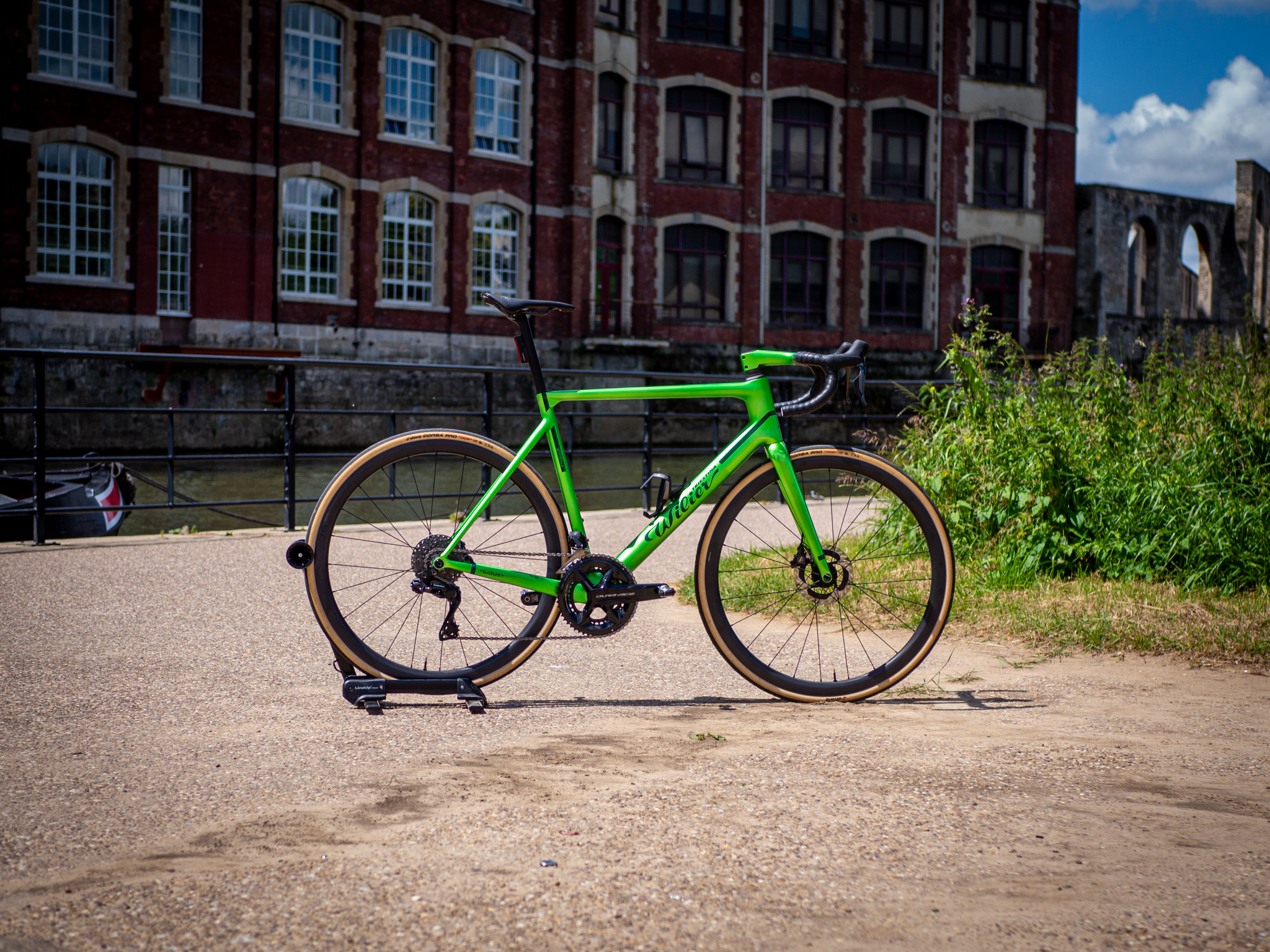
It's been an open secret since it was spotted in the peloton beneath the Groupama FDJ team's climbers recently, but today, Wilier has confirmed it has an all-new bike.
It's called the Verticale SLR, it was designed in partnership with the aforementioned WorldTour team, and once you've laid eyes on it, you'll know immediately what its intentions are. It's clearly aimed at being a lightweight all-rounder, and Wilier has confirmed that it will replace the Zero SLR.
Though it was designed with input from the French team, it will also be ridden by Astana-Qazaqstan's climbers, as both of the WorldTour teams are sponsored by the Italian brand.
We've already brought you the new Wilier Verticale SLR launch story, complete with detailed information about the bike, its weight, the pricing, and what Wilier says about it, but here we're going to take a look at how it rides, and how it stacks up against the competition.
Much to Wilier's undoubted dismay, that competition is fierce. Over the past couple of years, lightweight all-rounder race bikes have been having their day. Just last week we saw the launch of the latest Pinarello Dogma F, the slightly more endurance-ready Dogma X came last year, as did the Bianchi Specialissima, the Tarmac SL8, and the Factor O2 VAM. Giant's TCR came earlier this year, Colnago has pretty much overhauled its entire range in the past 18 months, and even Trek has a new bike on the way.
The Wilier Verticale SLR, therefore, has a lot of competition and a lot of noise to cut through if it's to take the crown as the best lightweight road bike, or even feature among the top picks in our various best road bikes buying guides.
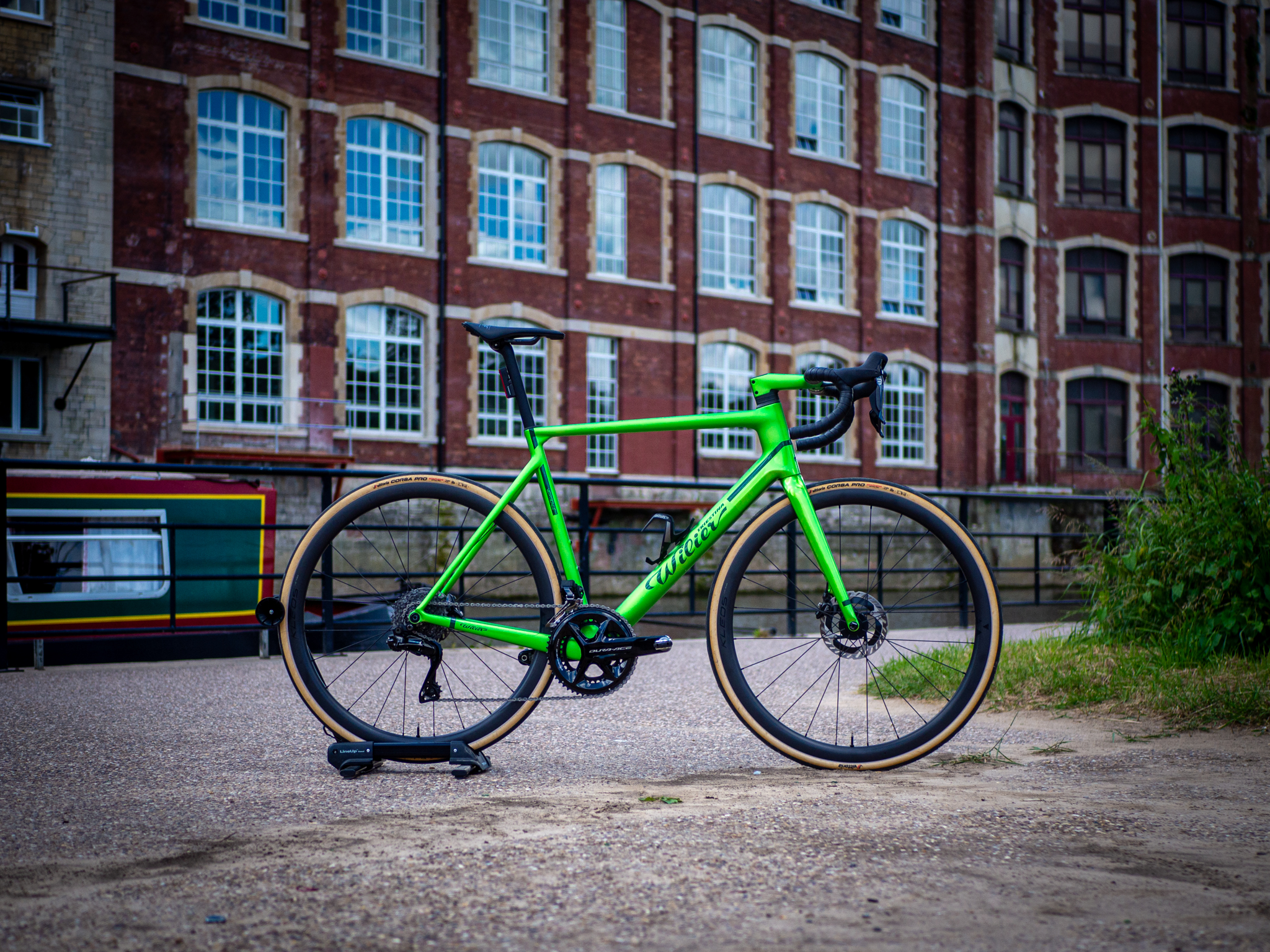


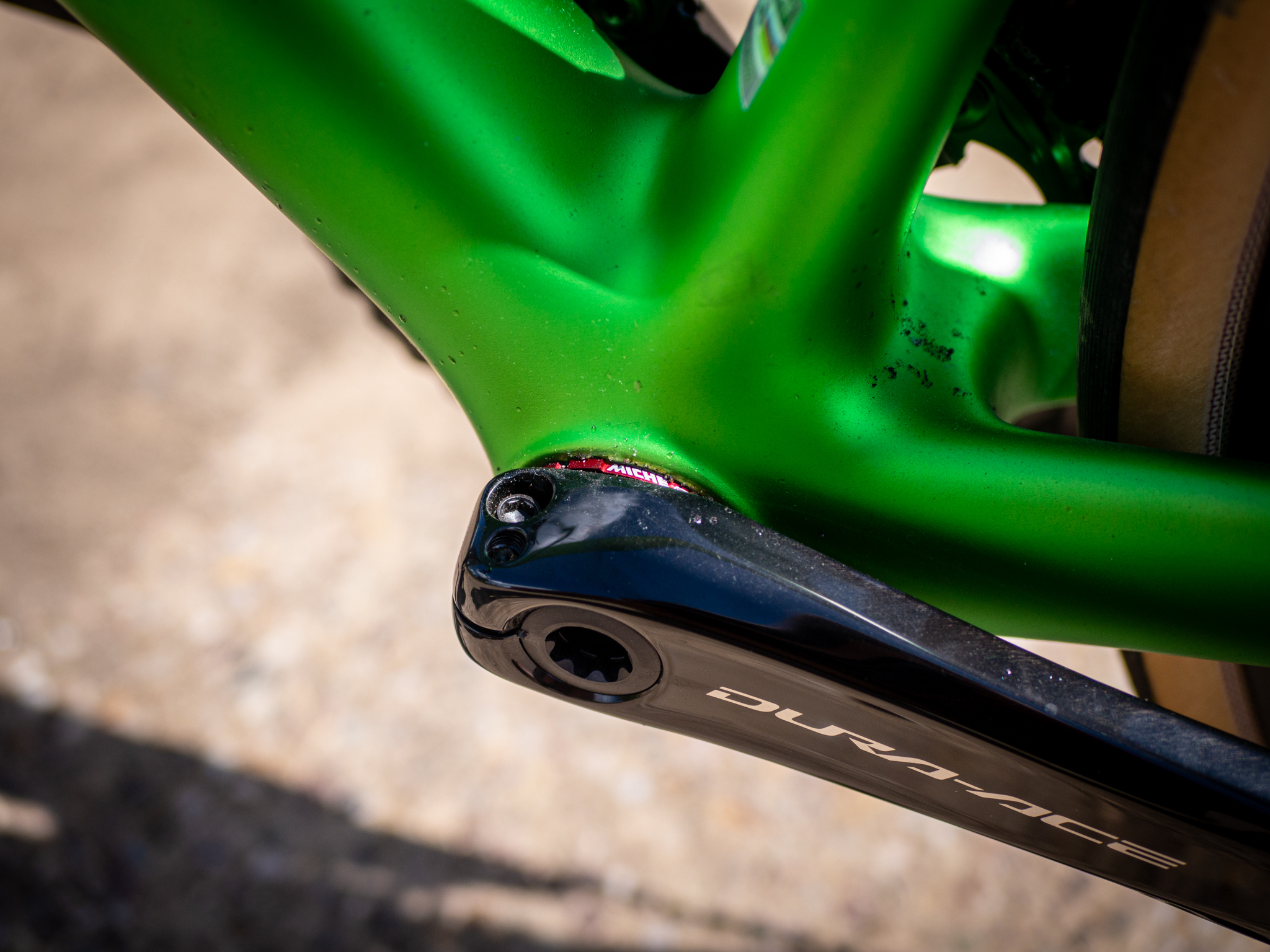



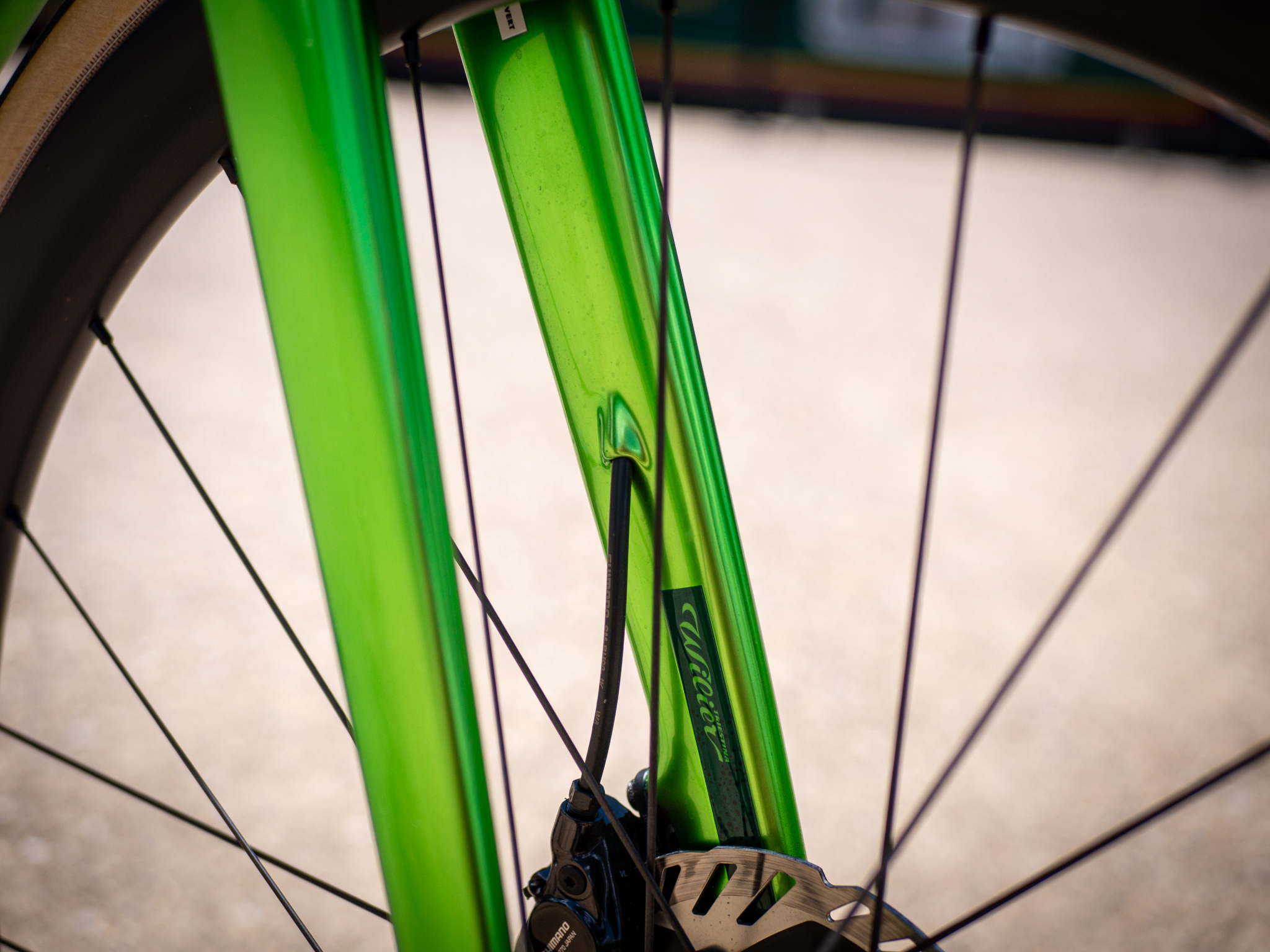
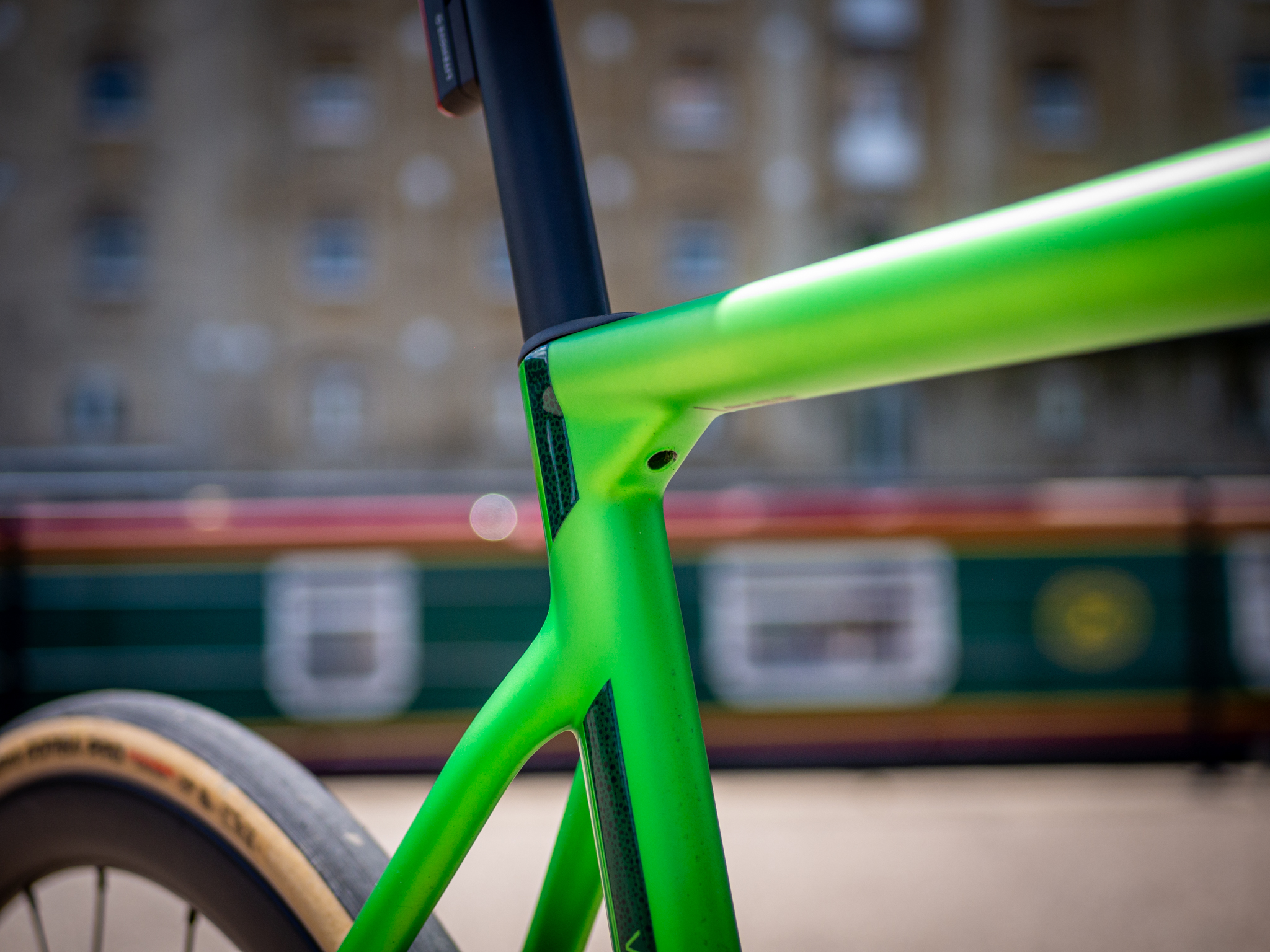
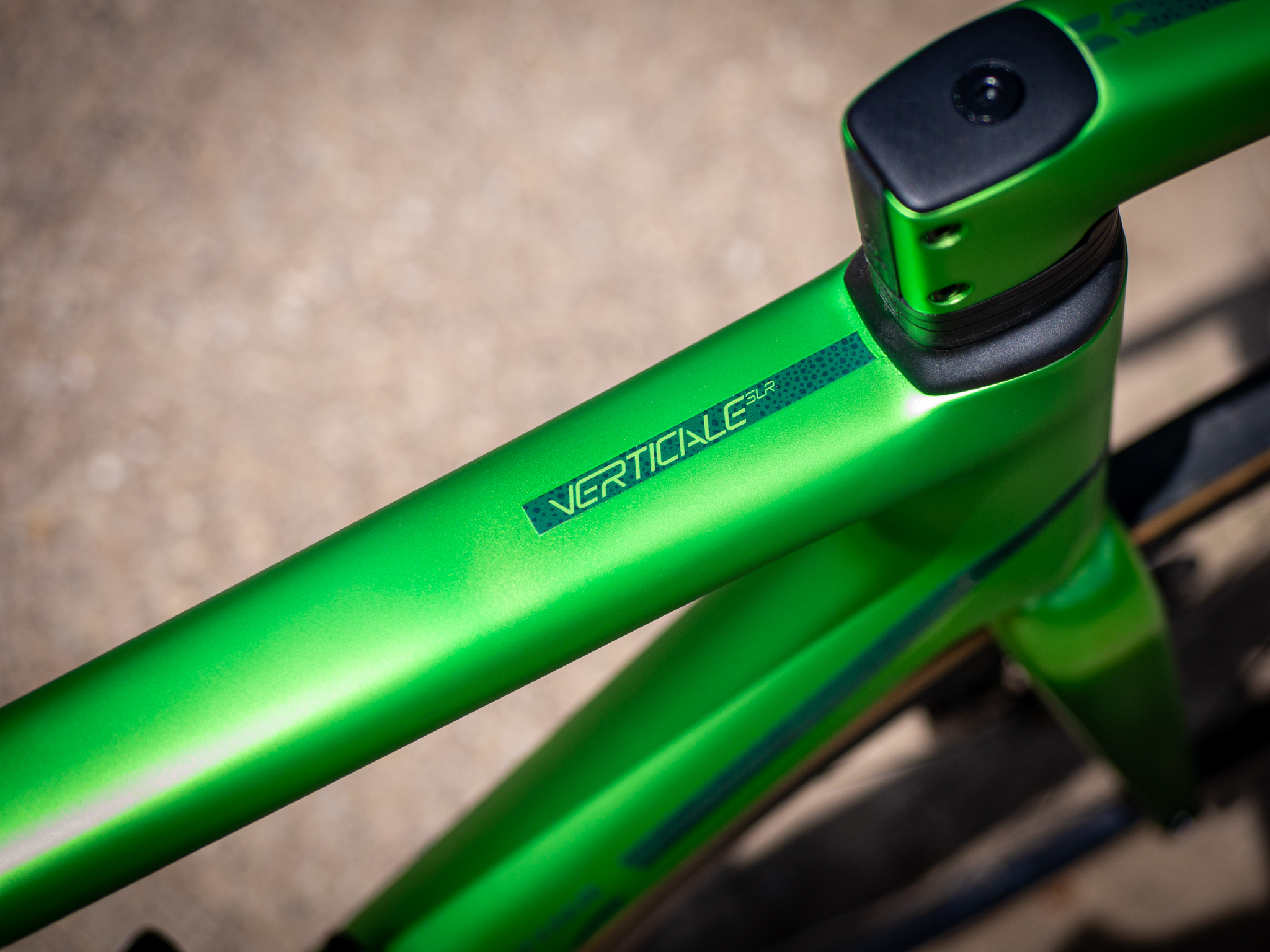
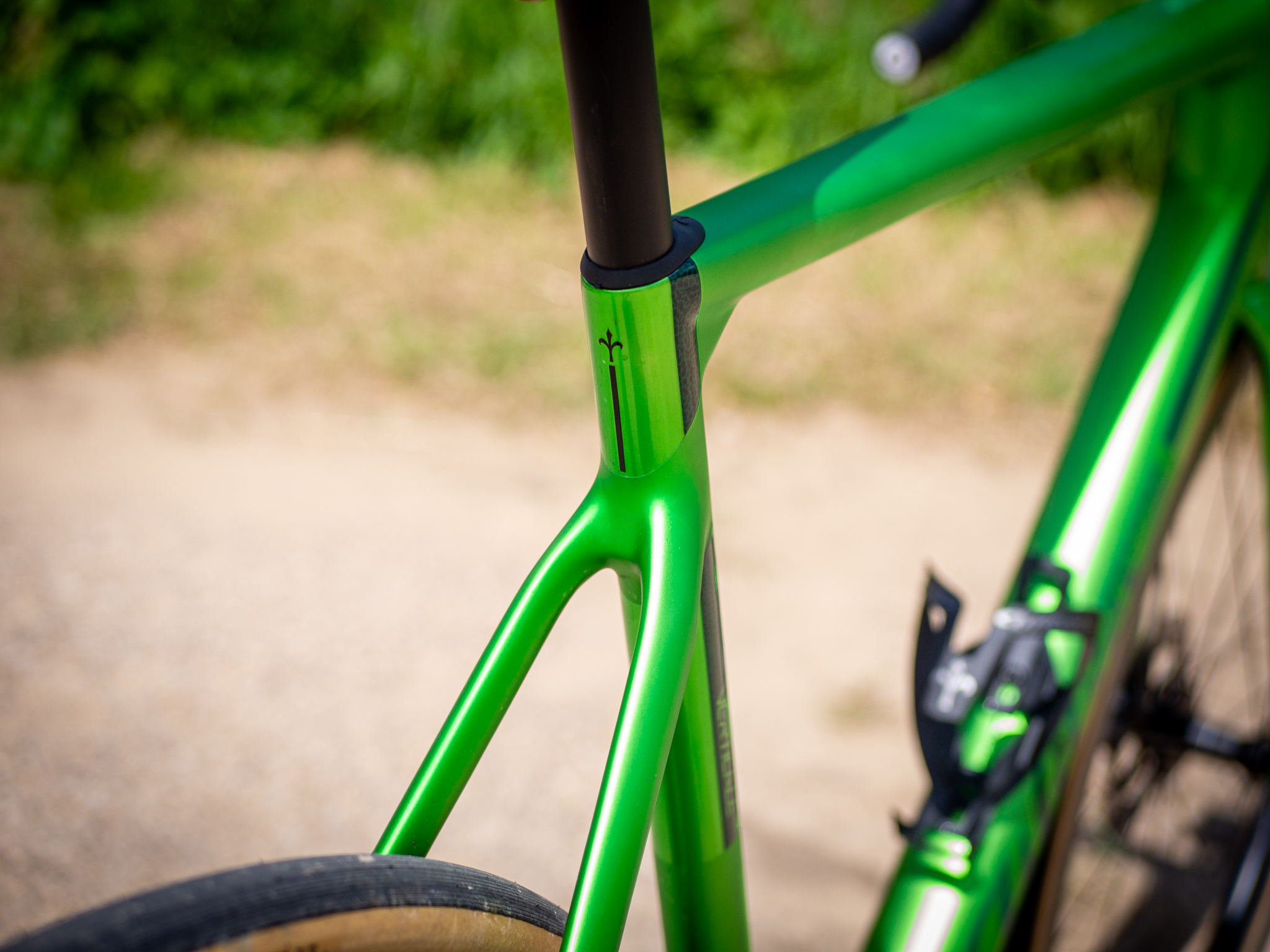
Design and specification
Visually, aside from the striking green paint job (which I hated at first but has grown on me), the Verticale SLR carries a rather understated design. The tube shapes are slightly ovalised, and there's a softness as they connect to each other at the various junctions.
Whereas the Colnago V4Rs has sharp aero-profiled edges trailing off the head tube, or the Pinarello Dogma F has wavy forks and angular junctions throughout, the Verticale SLR is probably the least Italian of the Italian superbikes. Some might call it a bit boring, but I think it works as a simple yet stunning design.
The only shaping to really notice is a slight angularity to the transition between the head tube and the down tube, but at certain angles, even this is almost invisible, and the edge blends into a rounded tube the further down the down tube you go. There's another sharp edge at the seatpost clamp, which fills a small triangle between the seat tube and the top tube, but this is small, and a marked improvement from the square Lego Brick inset that featured on the Zero SLR.
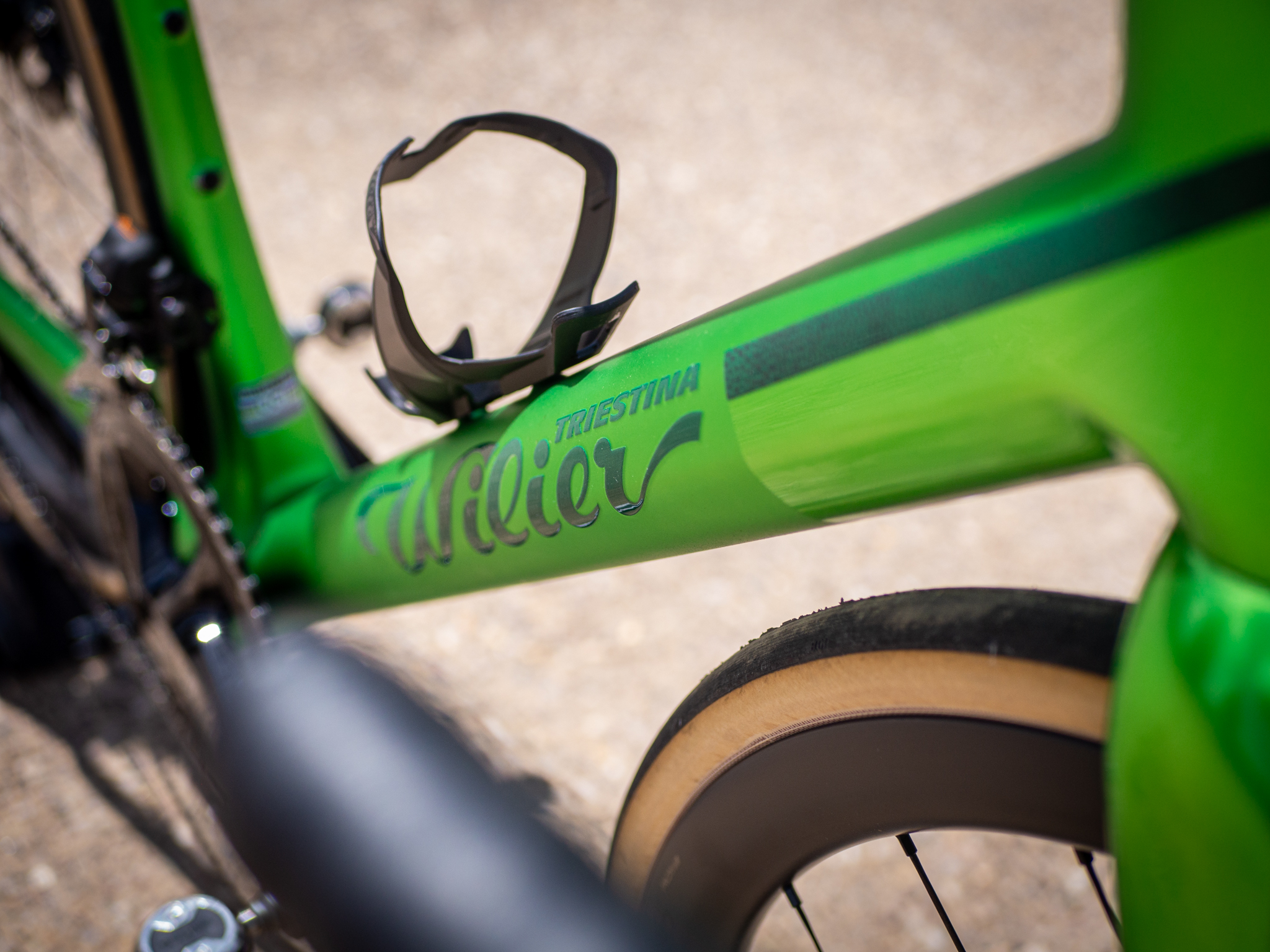
The roundness to the tubes and the softness of the junctions remind me of the Specialized Aethos, or even the old Cannondale SuperSix before they dropped the seatstays. It's a modern race bike in function, as we'll get into below, but despite its one-piece cockpit, the dropped seatstays and its disc brakes, I predict it's a bike that the old-school purists might actually take a liking to.
The only aesthetic negative I can find, and this is splitting hairs somewhat, is the rather industrial-looking rear drive-side dropout, on which you can see the hex bolt inside. Compared to the rest of the frame's smooth lines, and especially compared to the Pinarello Dogma F, which launched last week with blanked-off 'blind' dropouts (an idea it borrowed from BMC), the dropout looks unfinished.
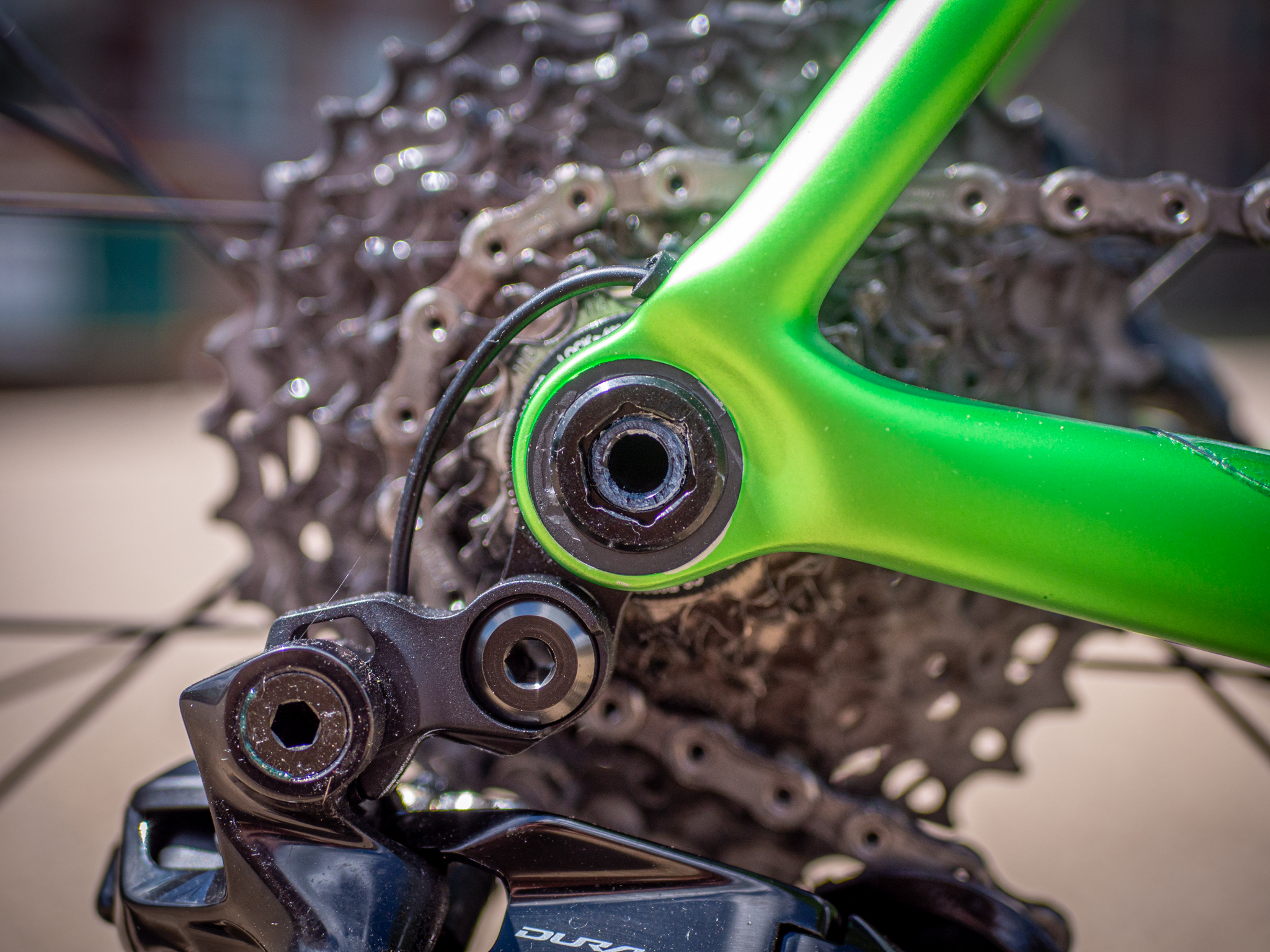
Functionally, the whole design is all about keeping the weight down. Wilier says the frame is 10% lighter than the Zero SLR, which was never a heavy thing to begin with.
It was made using three different carbon fibre types from Japanese brand Toray: Toray 800, Toray 1100 and M46JB, with the first two offering high tensile strength – thus requiring less of it to achieve the necessary specs – while the higher-modulus latter is used to build stiffness where it's required.
That's not exactly a novel approach, but the finished product has successfully achieved the goal because my size XL test bike tipped the scales at exactly 6.8kg without pedals (according to my trusty ParkTool scales).
That's certainly impressive, but it's not the lightest on the market, as the Factor O2 VAM squeezed in at 6.7kg (with pedals) in an equivalent size. Interestingly, despite their similar weight and similar intentions, the two bikes have quite a different ride feel, which I'll get into below.
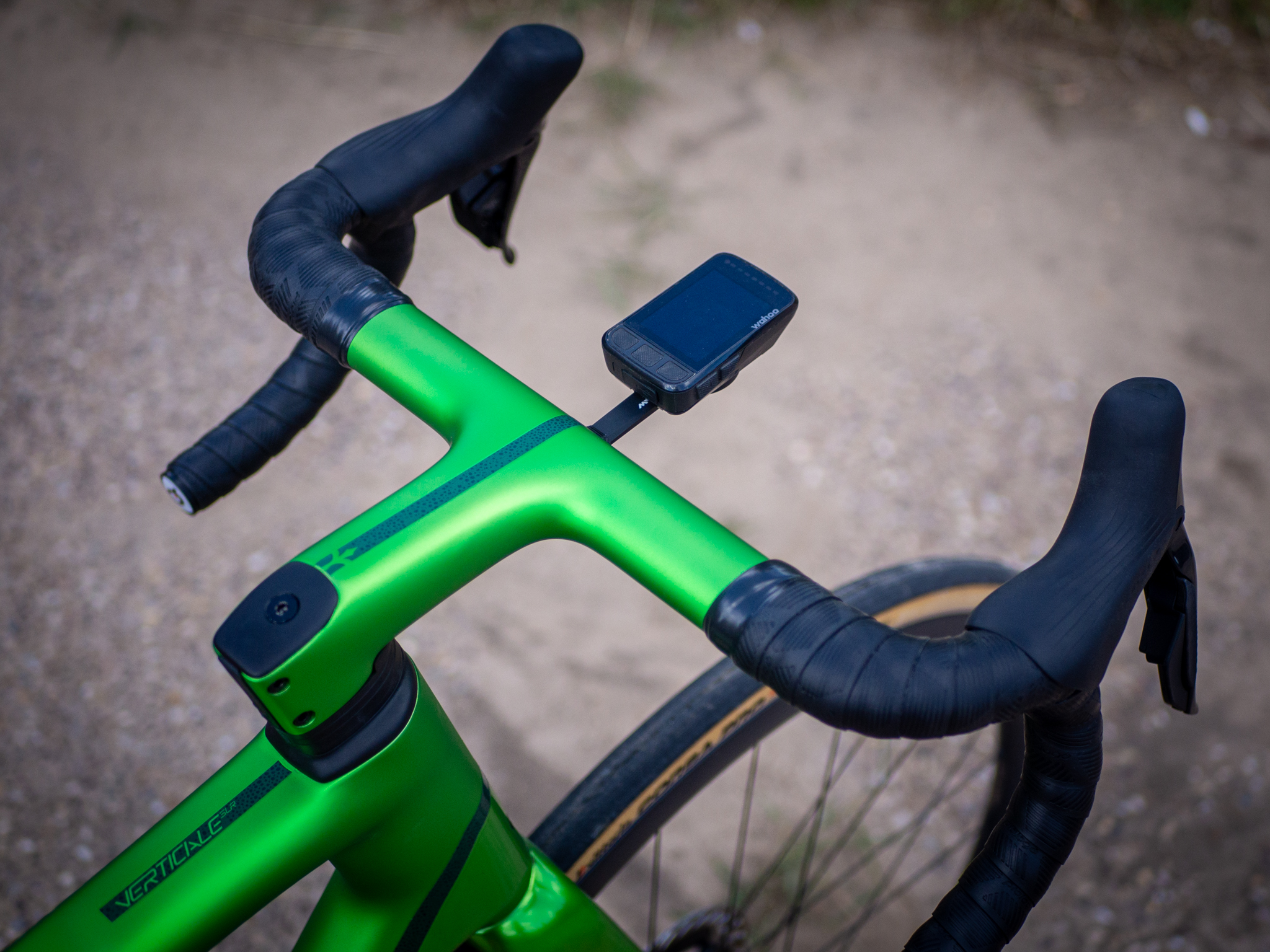
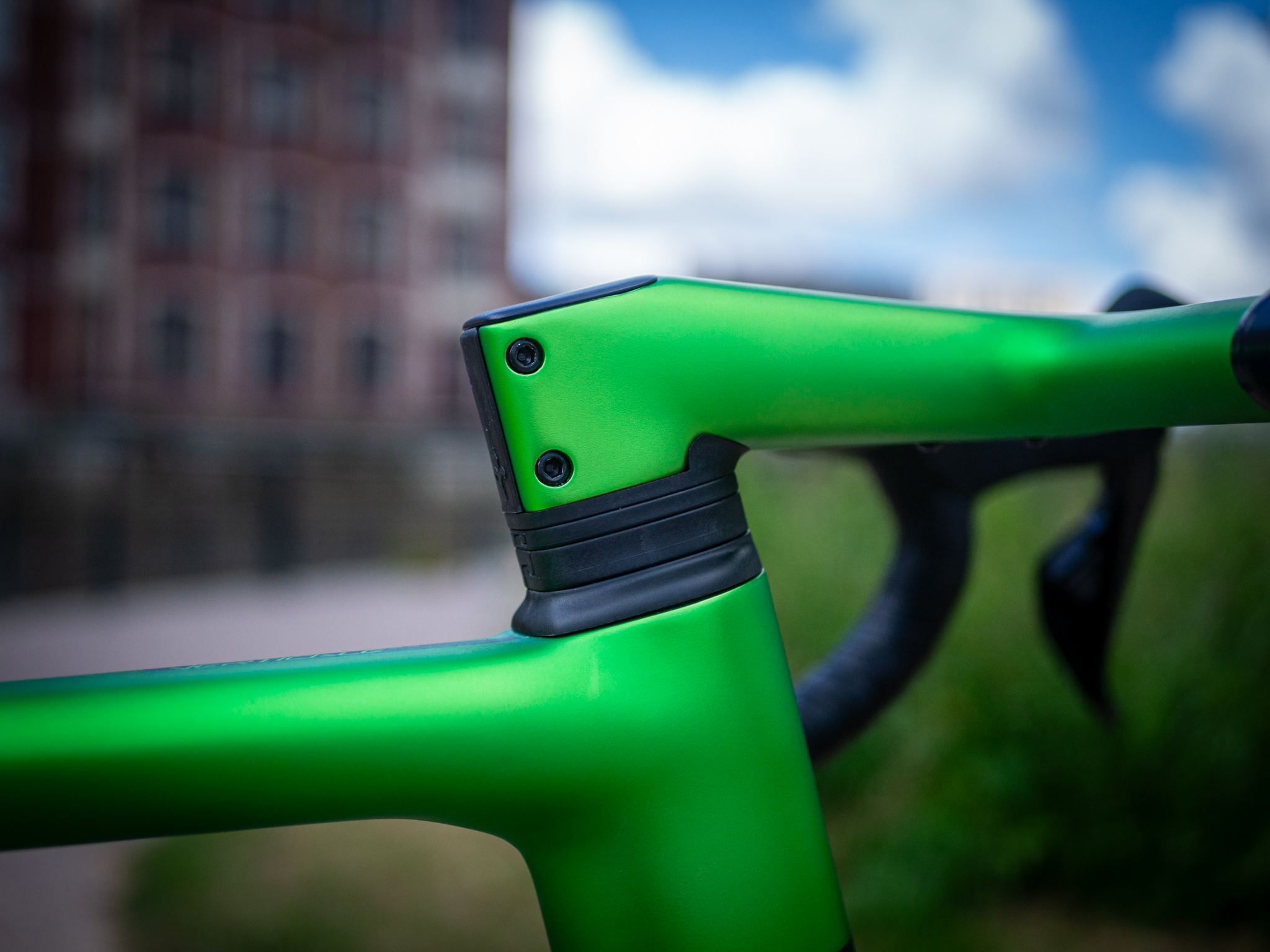

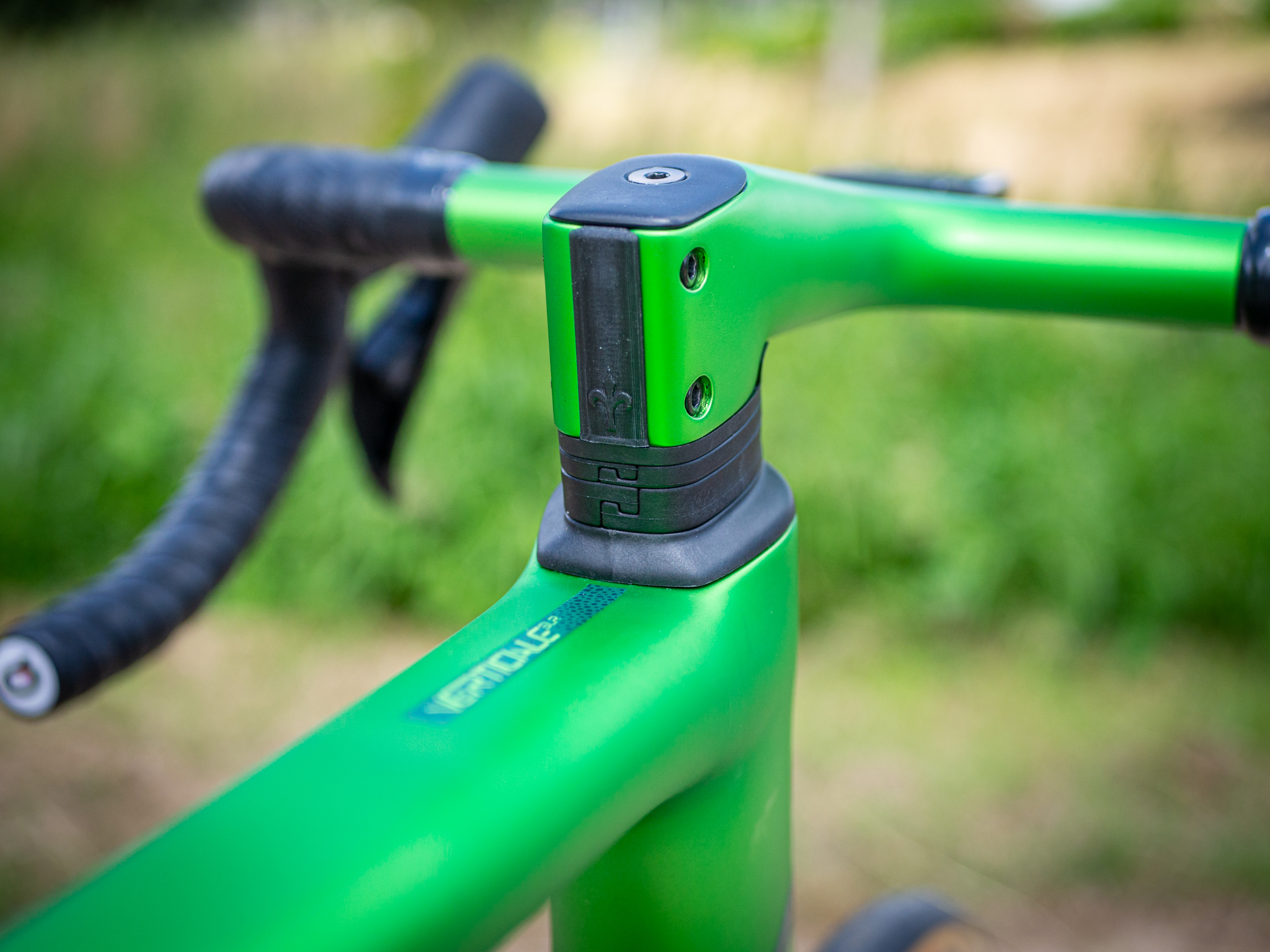
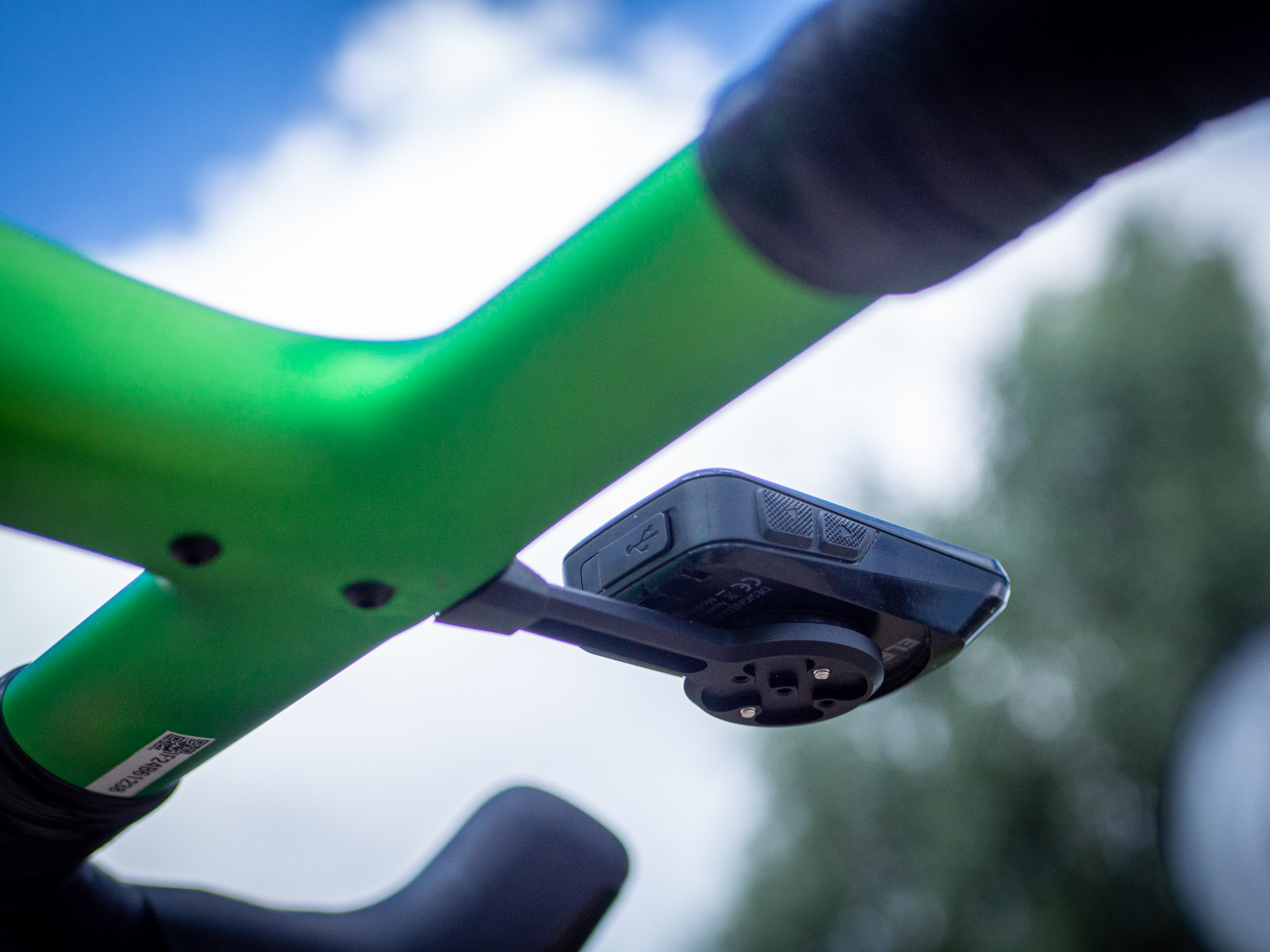
The cockpit
The smooth lines and rounded profiles continue at the cockpit, which is a new one-piece affair from Wilier itself. Called the V-Bar, it's colour-matched to the frame, compatible with other Wilier framesets, and it can be bought in six sizes, all of which are - thankfully - nice and narrow. With a 90mm or 100mm stem, the available width is 37cm at the hoods, flaring out to 40cm at the drops. For 110, 120, 130 or 150mm stem lengths, the width broadens slightly to 39cm at the hoods, flaring to 42cm at the drops. No, we've no idea what 140mm did wrong.
The tops of the bars are ovalised, but without being so deep that you can't get a good hold on them while climbing, and the flare is subtle enough so as not to ruin the road bike aesthetic, while offering a little more leverage for sprinting, confidence when descending at speed, and helps to ensure they're safe when riders choose to tilt the levers inward.
At the front, Wilier – together with components brand Miche, with whom they share resources as part of a Veneto-based bike-industry collaboration group – have created a neat aluminium out-front mount. Compatible with all the best bike computers, it integrates neatly to the inside of the stem, with two small screws on the underside keeping it in place.
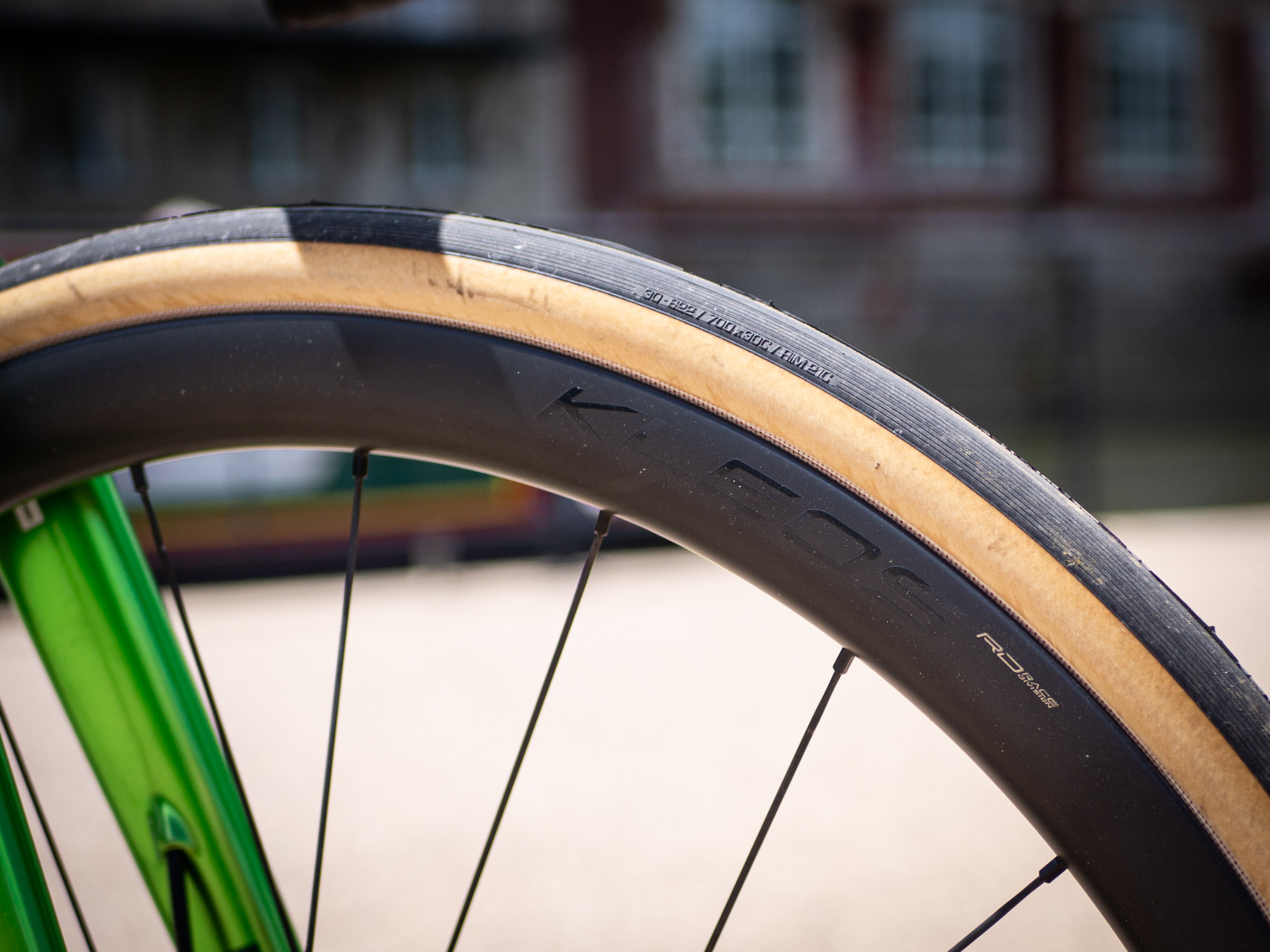
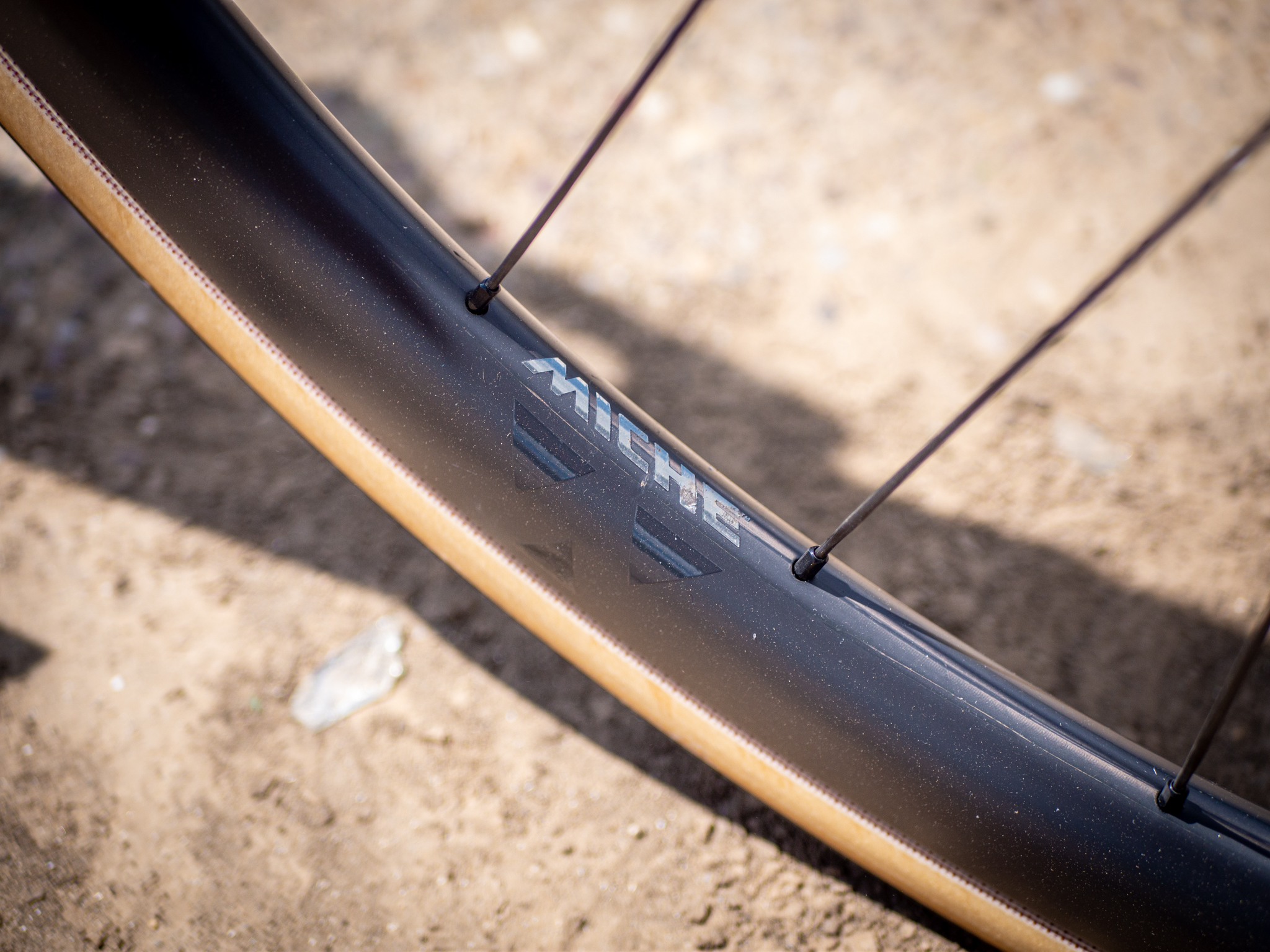


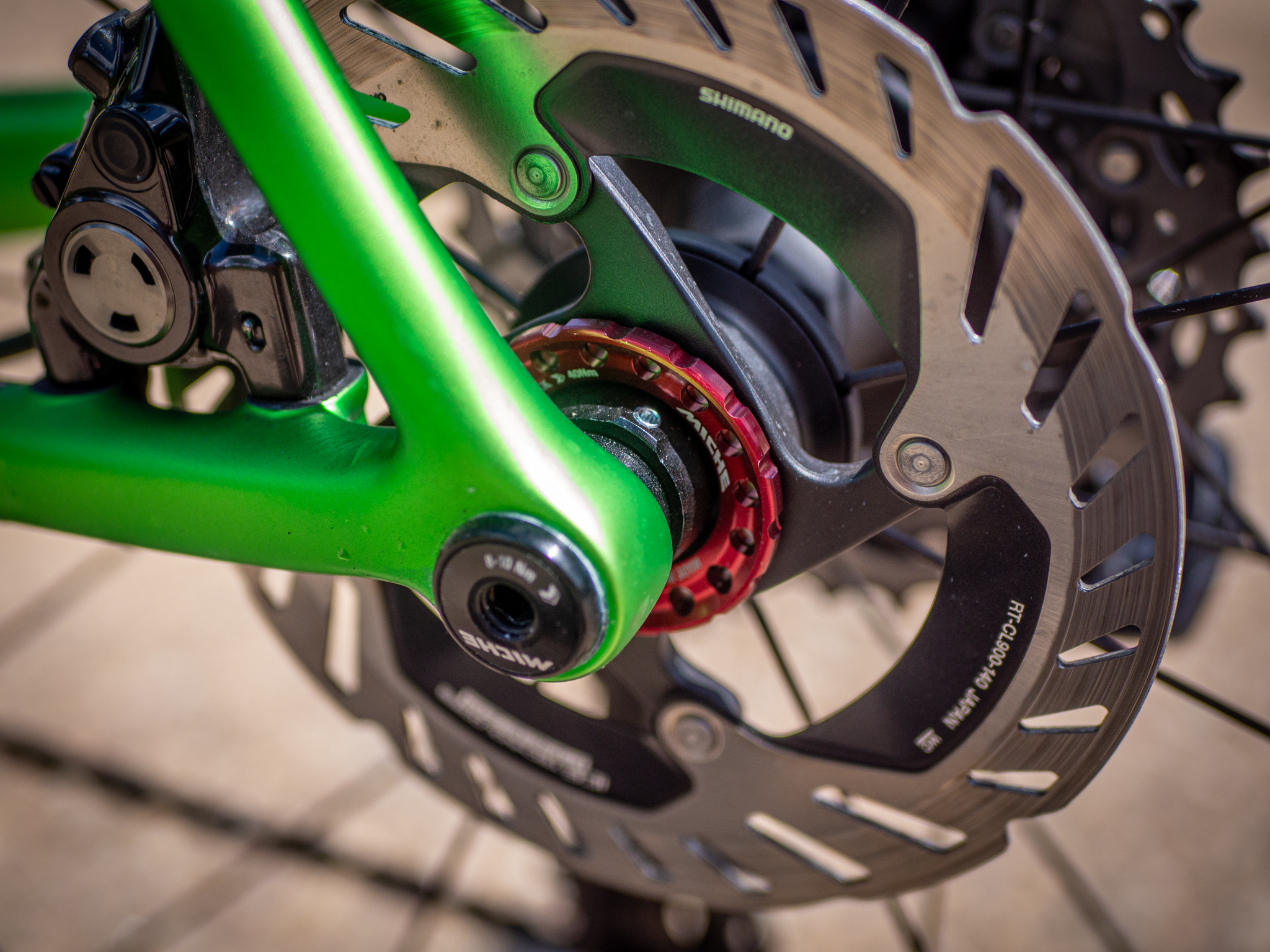
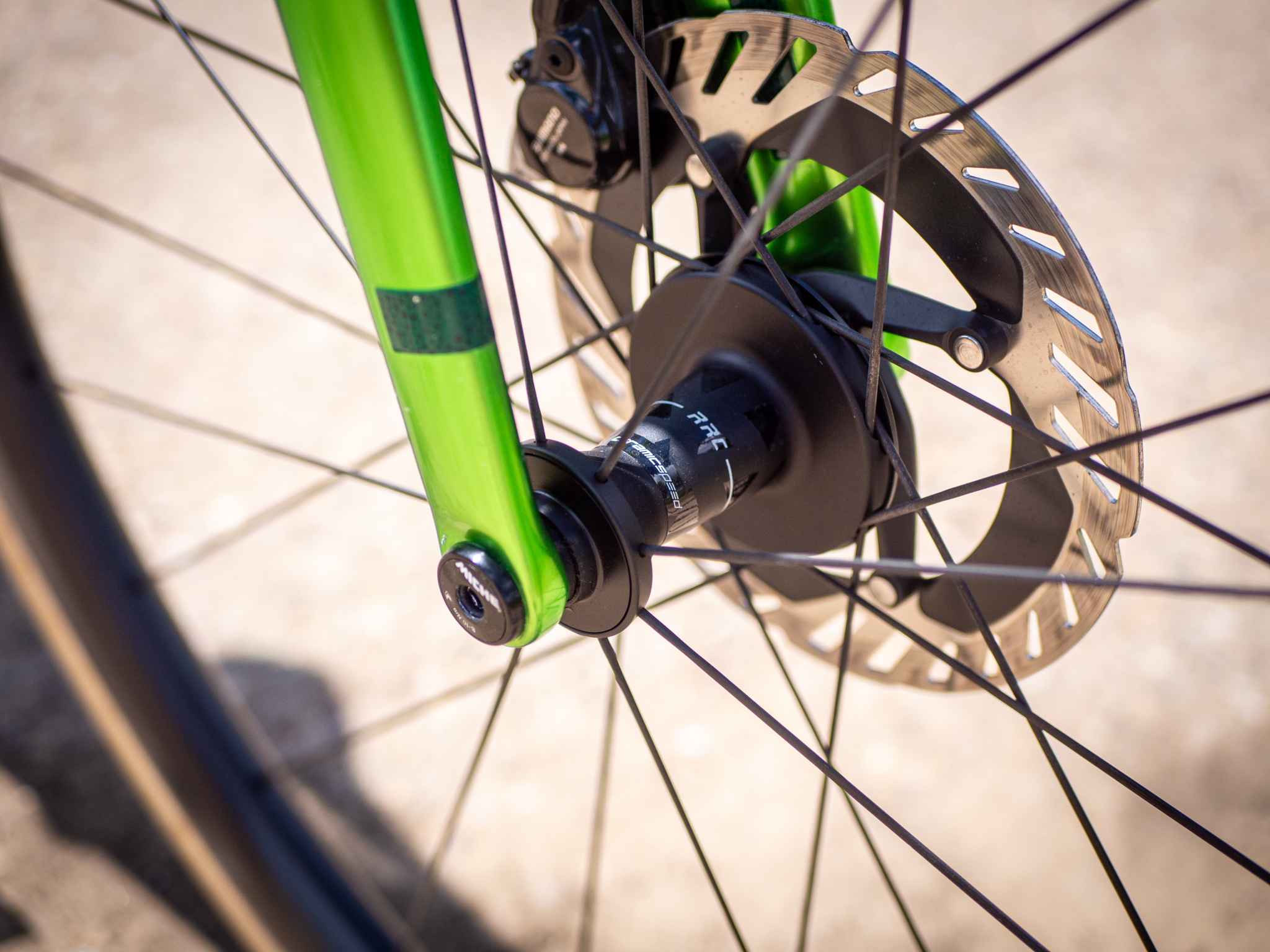

The wheels
Miche's involvement continues with the provision of its Kleos RD36 wheels, complete with Aero Blade hub shell. I recently reviewed the deeper Miche Kleos RD50 wheels, so if you want a more in-depth look at the technologies that make these wheels, check out that review. For those that don't, the headlines for the 36mm options featured here are a 1,390g weight (with XDR freehub, but no tubeless valves), 21mm internal width with hooked beads, CeramicSpeed bearings, a high-flange hub shell complete with aero cover, and a neat spoke lacing that avoids touching.
As mentioned in the review of the RD50 wheels, they perform well, but there's nothing about them that particularly stands out. If you buy the Verticale SLR and it comes with these wheels, there'll be very little reason for you to want to upgrade them, but they're not the wheels I'd buy as an aftermarket upgrade.


Geometry
Compared to the Zero SLR, the Verticale has become longer, and taller, with a slightly steeper head angle. I never rode the Zero SLR, so I can't say how this has changed the handling from one bike to the next.
On my size XL test frame, the reach is 400mm, which is very much in the ballpark for most racy road bikes. For comparison, the Tarmac SL8 is 402mm, the Factor O2 VAM is 401mm, and the SuperSix Evo is 395mm. The stack is where things get interesting though, as the Verticale SLR's stack is a comparatively low 577mm. The same three competitors measure 591, 597 and 595mm respectively.
Paired with the stock 30mm Vittoria Corsa Pro tyres – which recently earned a place in our buying guide to the best road bike tyres – the Wilier Verticale SLR is surefooted and stable, and a natural on fast twisting descents.
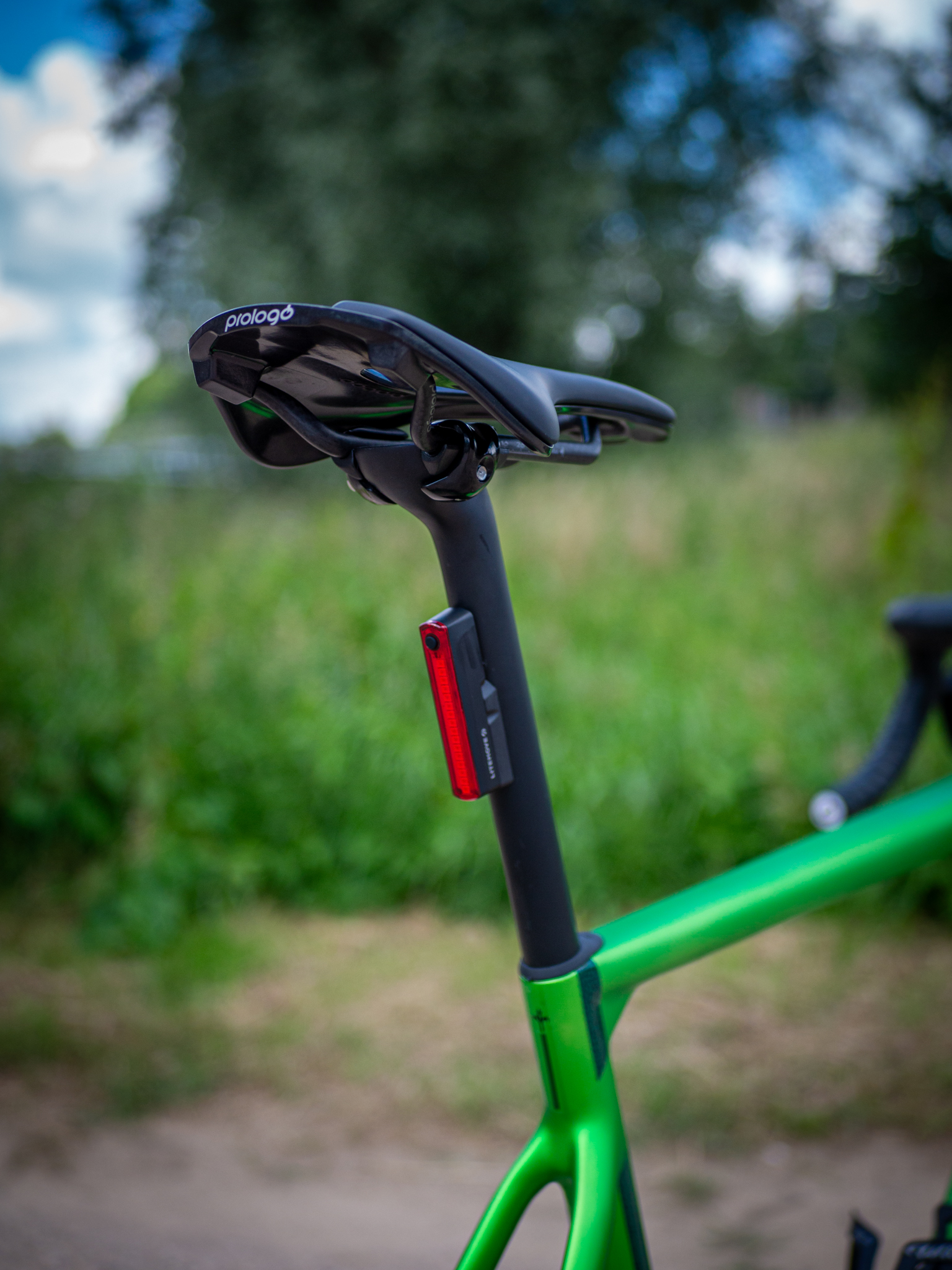

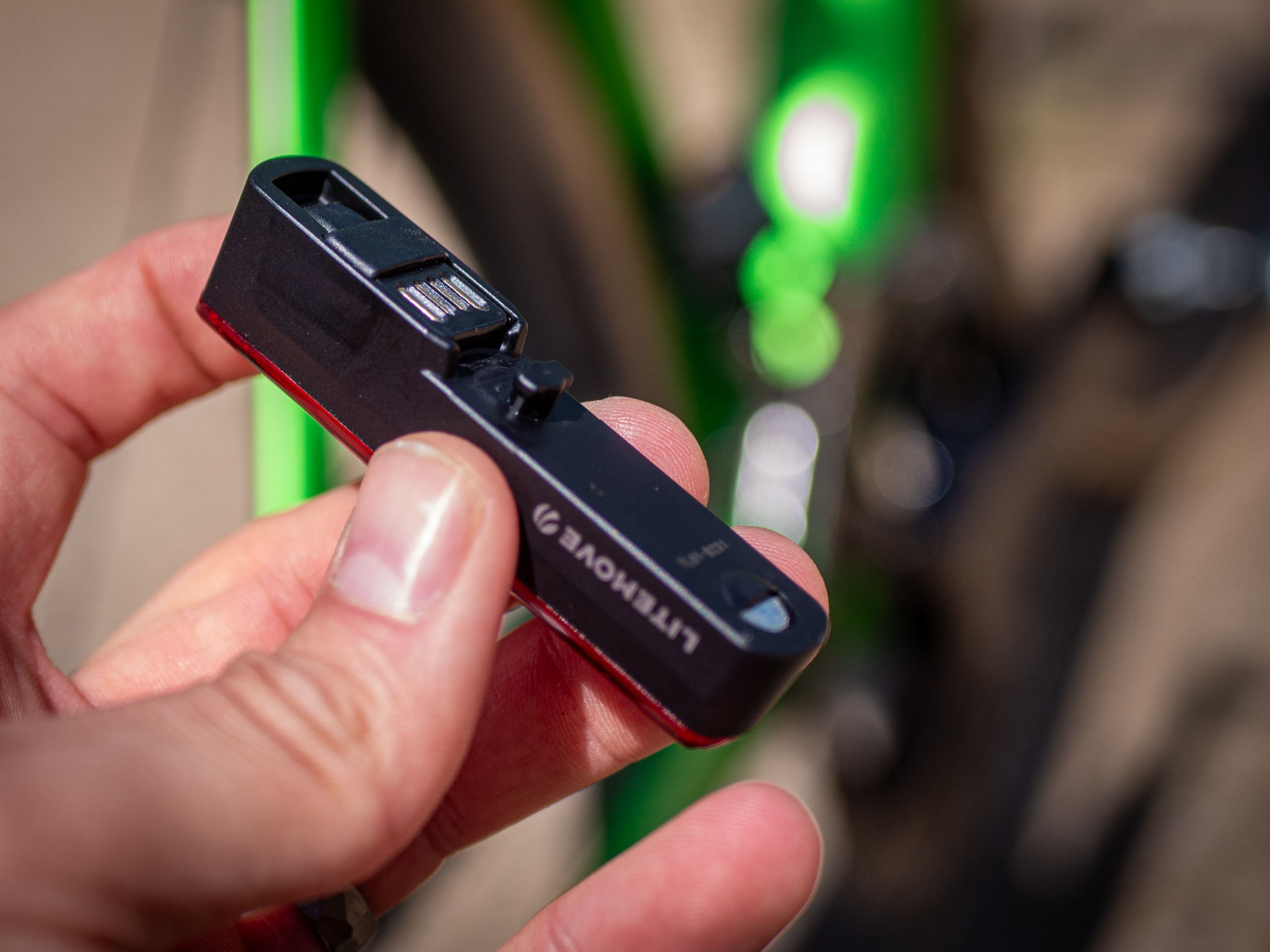
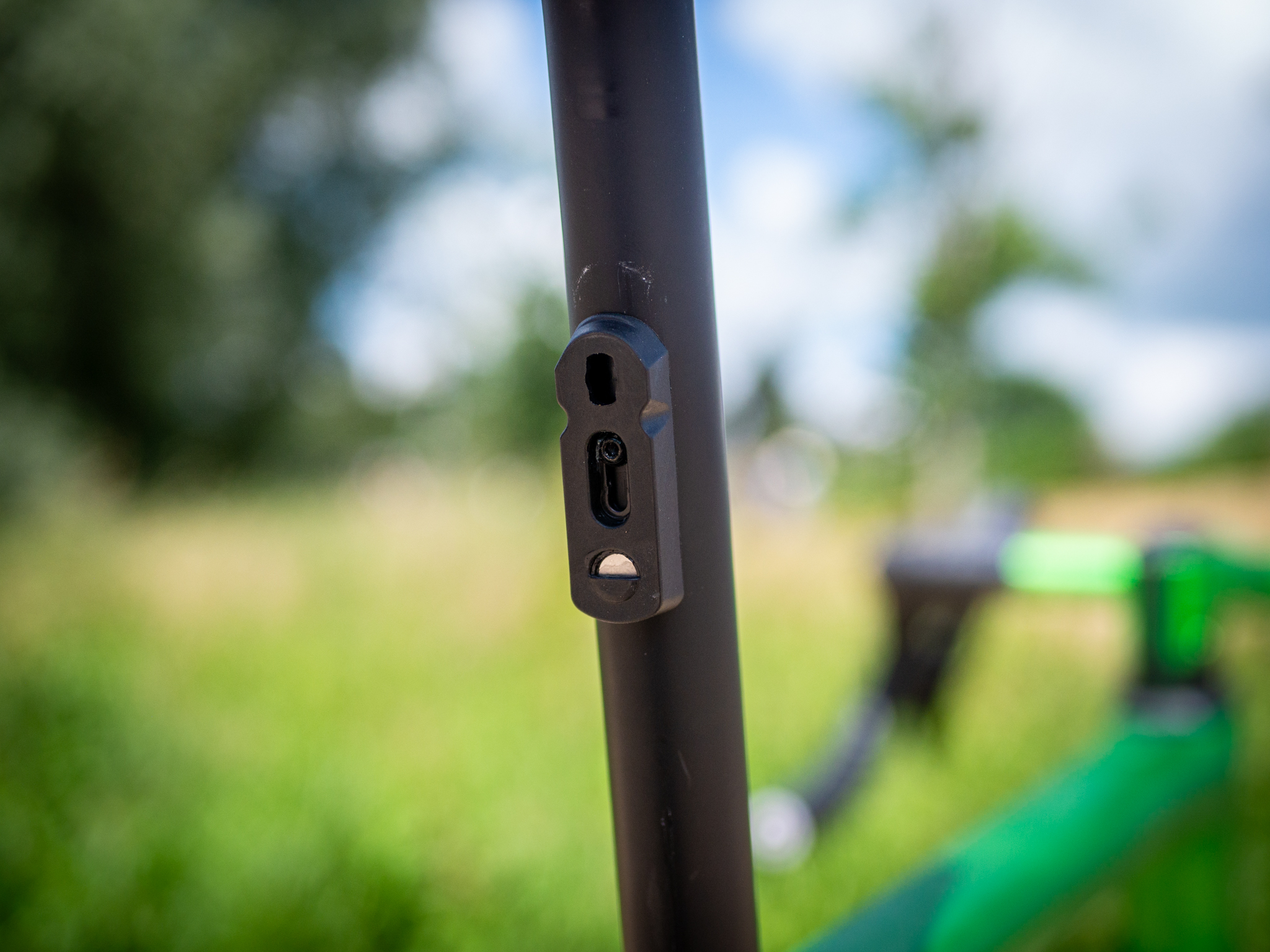
Seatpost
I wouldn't usually dedicate a section to the seatpost itself, but there's a novel inclusion here that has to be highlighted because I think it's a smart idea. That is the inclusion of an integrated rear light that twists neatly into place. It's the TL03 from the Taiwanese brand Litemove, so you can buy additional mounts if you want to move it between different bikes. But an adapted version of the magnetic mount is screwed directly into the rear of the seatpost.
The mount can be moved up and down to a choice of two mounting holes, but even on the lowest, my Scicon saddle bag would still knock the light around. I fear it would be enough to knock it free throughout a long ride.
Interestingly, for racers such as Wilier's sponsored teams, the light can also be replaced with a race number holder.
The seatpost itself is slightly ovalised but without a D-shaped flat rear. It is available in two setbacks of 0 and -15mm.

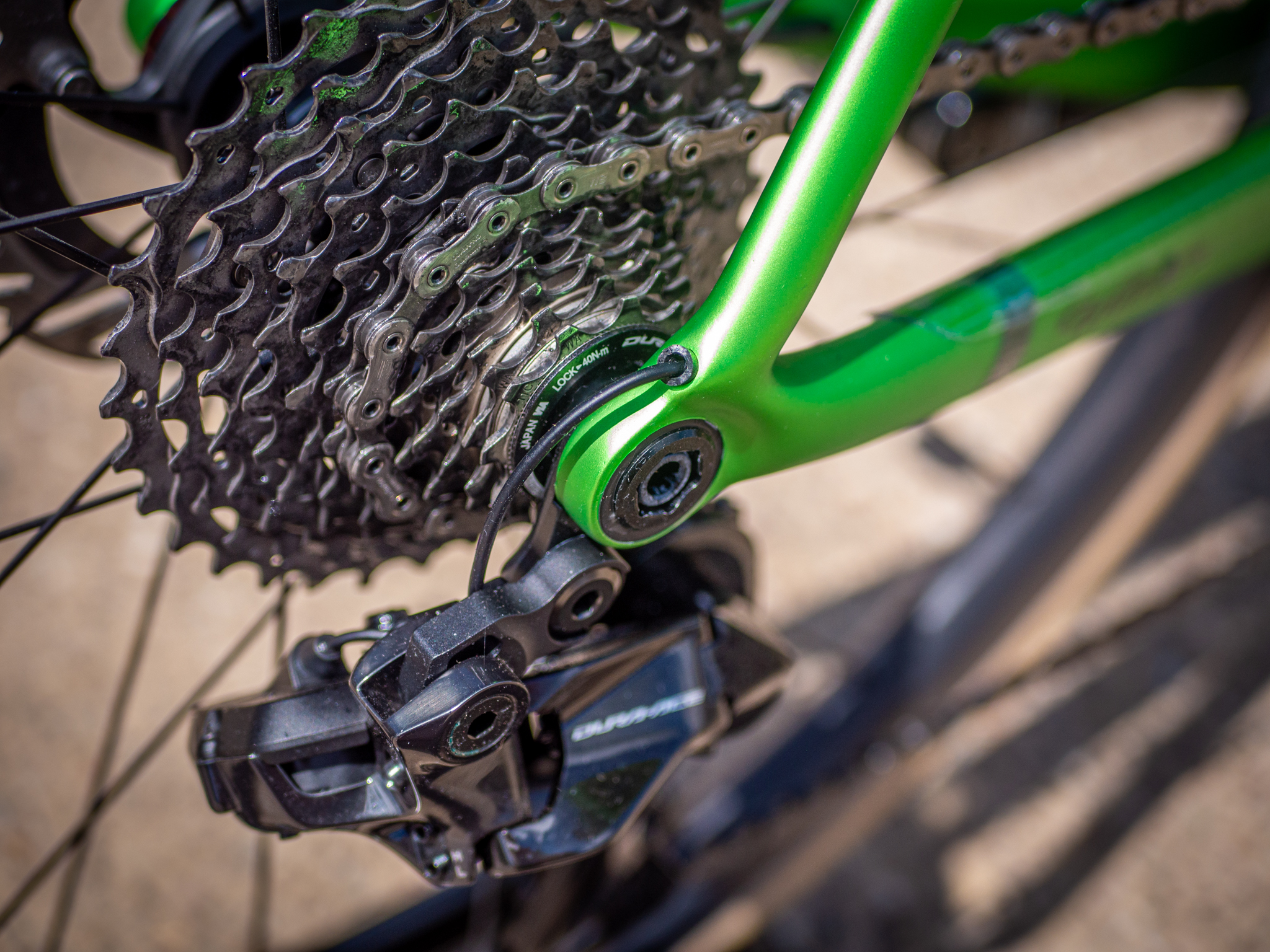
Groupset
My test model was equipped with Shimano's 12-speed semi-wireless Dura-Ace Di2 groupset, which was as flawless as ever during my time with the bike. However, as is becoming incredibly common on new bikes, the choice of a power meter is optional, and my option was specced without one.
It's here that I'd usually say something like '£11,000 for a bike without a power meter is insane!' but the more I think about it, the more I respect brands that give buyers a choice.
Not everybody wants or needs a power meter. Given the widely-reported accuracy issues, there are many who would also prefer not to have a Shimano power meter, or they might simply own one already, and so offering the choice is a good way to let people save some cash on the initial purchase, rather than just forcing the tech onto everyone, making the decision of which power meter they should have, and then making them pay for the privilege. It's like paying thousands for a bike, only to have to swap out the handlebar and stem, buy a new pair due to bike fit and sell the old ones on eBay. This is an extension of that same problem and one that brands are slowly starting to solve.
Performance
Straight away, in the first few minutes of my first ride on the Verticale, I was reminded of the time I got to ride around the Monza F1 track on one of Ineos Grenadiers' old Pinarello Dogma F10 bikes. It was Luke Rowe's bike, slammed, with rim brakes and tubs, and it was light, fast, and stiff as a board.
That's not to say the Verticale feels like a four-generations-old Pinarello, but it reminded me of riding a bike that is dialled, lightweight, slammed, stiff… pro. It felt great. With its aggressive geometry, long and narrow cockpit, and feathery overall weight, the Verticale feels like the bike you'd want if you were racing up Mont Ventoux.
The similarly lightweight Factor O2 VAM had a comparable level of eagerness to accelerate, but while that was a bike you could comfortably ride all day in the French Alps at a sedate pace, the Verticale SLR is stiffer and more raring to go. I get the feeling it would start shouting at you - in Italian, of course - if you tried to have an easy day.
That eagerness to accelerate comes via the overall lightweight, of course, but also the frame's stiffness. In contrast, the O2 VAM's acceleration comes more as a result of the Black Inc 28/33 wheels which are a seriously impressive 1,118g for the pair; a full 272g lighter than the Miche wheels found here.
Where the two differ, is that the stiffness also translates into pinpoint handling. It took me a while to be comfortable descending on the O2 VAM, whereas the Verticale - like I found when reviewing the S-Works Tarmac SL8 - was immediately confidence-inspiring. That is certainly helped by the 30c tyres.
Of course, all of this lightweight focus means if you're looking for a bike for flat-land speed, others will be better suited. Wilier itself has the Filante SLR, which is more of an aero-first bike and is used by the likes of Mark Cavendish (Astana Qazaqstan) when sprinting.
I've not taken it to a wind tunnel to make head-to-head comparisons, so I have no empirical data to back this up, but the tube shapes aren't as obviously aero-profiled as something like the new Dogma F or the Tarmac SL8, so I would expect a small detriment against those in empirical tests.
That doesn't mean the Verticale is a slouch on flatter terrain, though. It's well within the ballpark of a fast race bike, and perfectly happy tearing along in a group ride or on long tempo or threshold efforts on the flat.
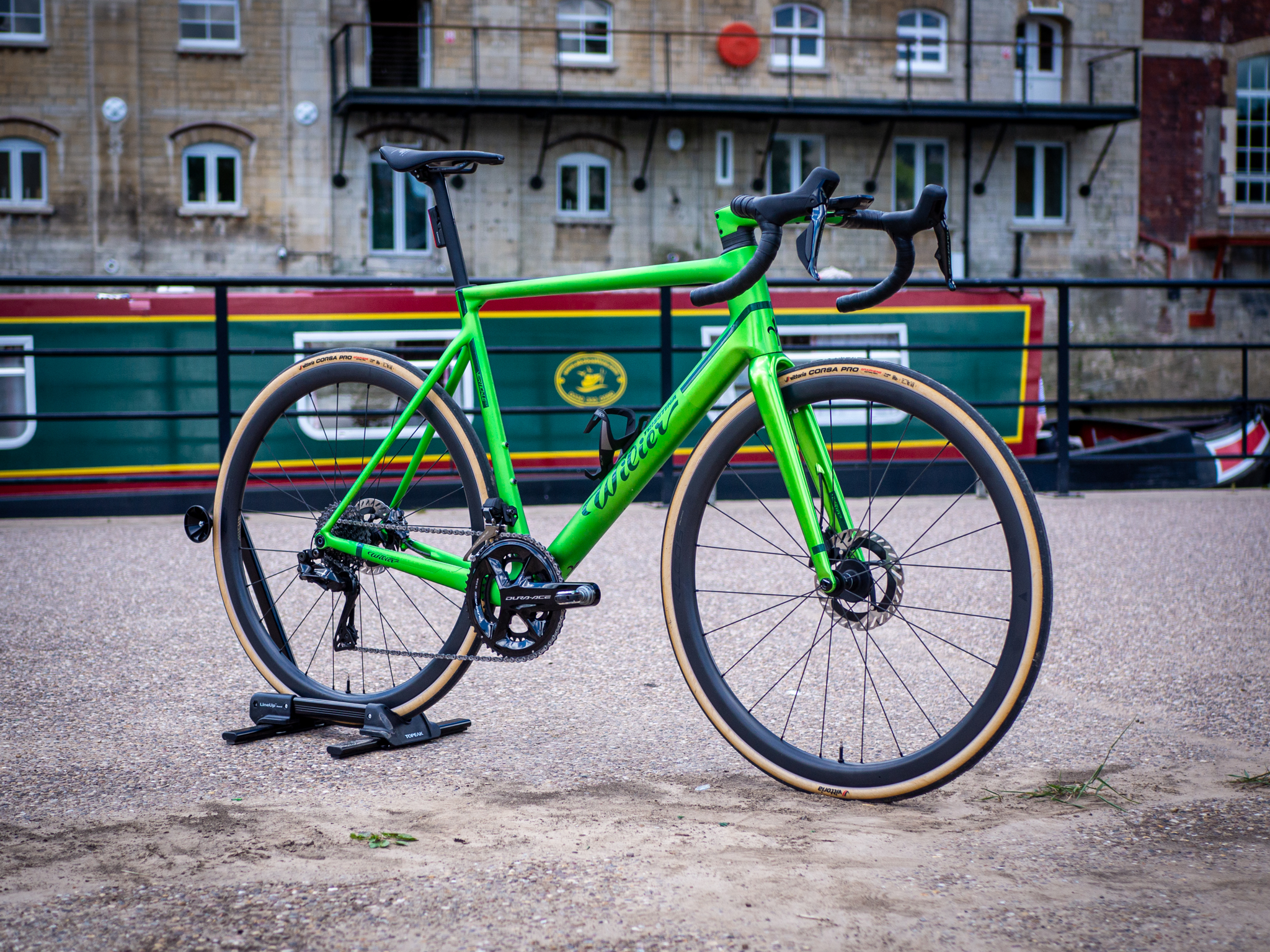
Value
Never an easy section to complete, the value of this bike can be considered through multiple different lenses.
Unlike the Pinarello Dogma F, which only comes in Dura-Ace, Red, or Super Record Wireless specs, the Verticale can at least be bought in lower-spec groupsets. They're still a significant chunk of cash, though.
A frameset alone will be priced at £5,500 / $6,900 / €5,800.
With SRAM Force AXS, it will be priced at £9,200 / $12,100 / €9,900, with a premium of 500 of the respective currency on top if you want the power meter included. Step that up to SRAM Red AXS, and you'll pay £12,200 / $15,300 / €13,000, complete with a power meter. There's no option not to spec one here.
On Shimano builds, Ultegra is priced at £9,000 / $12,100 / €9,900, with no option to add a power meter. Dura-Ace will set you back £11,000 / $14,500 / €12,200, plus a premium of £1,200 / $800 / €800 for the Dura-Ace power meter.
Only one Campagnolo build is available, and that's Super Record Wireless (no power). You can't buy it in the UK, but the USA and Europeans can get it for $15,700 / €13,400 respectively.
Through the Joe Public lens, that is an incredible amount of money to spend on a bike, and a bike a third of the price will get you a lot of the way towards a similar level of performance. That much is true, and like the S-Works Tarmac, a Factor O2 VAM, or a SuperSix Evo Lab71, the Verticale SLR will be nothing more than a dream purchase for most people.
For the select few who can find such disposable income, the value proposition is pretty well in line with the competition. Here in the UK, the price for the SRAM Red model is exactly the same as the O2 VAM, and within £200 of the S-Works Tarmac.
In the USA and Europe, things differ as the home advantage plays a part. The American company Specialized is naturally more competitive there, with the SRAM Red-equipped Tarmac coming in $800 cheaper than the Verticale. In Europe, Wilier's home advantage means the Verticale comes in a whole €1,500 cheaper.
These are all huge numbers, but in the instance of wanting the absolute best road bike on the market, the Wilier's performance doesn't belie its price.
Verdict
So far in this review, I've concluded that the Verticale is a great bike, with a great aesthetic, a surefooted snappy ride quality, and a high (but competitive) price. The big question I'm yet to answer completely is who is the Verticale SLR for?
It's a fairly fast bike but by Wilier's own admission, not as fast as an aero bike like the Filante SLR. It's seriously lightweight, but as I've pointed out when you look at the whole bike package, there are others that are lighter (although if you switch in those Black Inc wheels, it will run close), and it's not the only bike you can hit 6.8kg without pedals, as the Tarmac SL8 and Giant TCR can do the same in an equivalent size.
For most amateurs, aerodynamics is a better focus when it comes to maximising efficiency even if it comes at the cost of a few hundred grams of weight. Most riders would be better off with something like the Filante SLR (if sticking with Wilier) or one of the more aero-considered competitors like the Tarmac.
In terms of defining the perfect customer, Groupama FDJ's prodigous French climber Lenny Martinez is probably it. Martinez will never find himself in the wind on the flat, so the aerodynamic deficiencies won't really matter, but he packs a mighty punch when the road gets steep, and the impossibly steep inside line of an Alpine hairpin, with the rider throwing down 7w/kg, is where this bike will be most at home.
But as I pointed out when reviewing the O2 VAM, you don't always buy a bike with your head, you buy it with your heart, and I think the same applies here. The Verticale SLR is a modern Italian superbike but with cycling's traditional aesthetic at its core.
It looks fantastic; perfectly blending the checklist of a new race bike but without looking like it was designed in the Crystal Maze. It is stiff, with that grin-inducing surge forward when you stamp on the pedal, and although other bikes are a little more forgiving on longer rides, the Verticale SLR is still an enjoyable place to spend an entire afternoon.
If you can afford it, you won't be unhappy if you buy it. There are arguably bikes out there that will be better as a tool, but as a bike to make you smile each time you ride it, I'd happily own a Verticale SLR.







